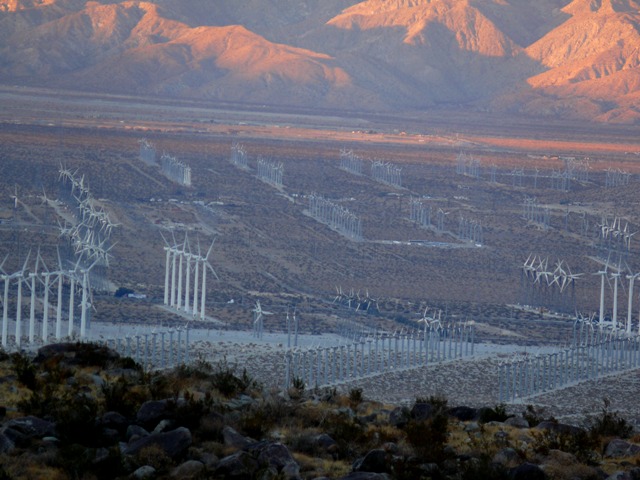PALM SPRINGS' WIND FARMS
Submitted by Jeff Buster on Sat, 01/27/2007 - 11:26.

California leads in trends. Hoola Hoop, skate boards, surfing, Rutan aircraft; innovation is given space to mature. From the early Zond turbines, to recent GE, Suzlon, Gamesa, and Vestas turbines, California for the last 25 years has been leading the way in the US in "breaking down" the faults in turbines. California doesn't have any off shore turbines yet.
Cleveland Foundation's Ron Richard wants to start with offshore turbines in Ohio. Would it make sense for Mr. Richard to visit Palm Springs and speak with the turbine operators here and see what their experienced opinion would be about where to shake out the early efforts?
( categories: )
|
Amazing image of wind power in place
Great perspectives, Jeff! I was once riding a motorcycle from San Francisco to Sacramento and suddenly found myself surrounded by 100s of wind turbines - I'd never seen even one before - it was an amazing sight. Your photo here captures much of the wonder of this technology, and I can see how it would work well on land all along the Pacific, where there are nearly constant winds. So, what will this technology look like in the NEO future? Where do you see as best places for turbines on and off shore around here?
Disrupt IT
What you saw was the
What you saw was the Altamont Pass (east of San Francisco) one of three major turbine installations
Your picture of the wind farm on the San Gorgonio Mountain Pass in the San Bernadino Mountains contains more than 4000 separate windmills and provides enough electricity to power Palm Springs and the entire Coachella Valley.
Utility-scale wind farms are generally located in areas with average annual wind speeds of at least 13 miles per hour. Wind power is more available during certain seasons because climatic conditions affect wind speed. In California, wind speeds are highest in the hot summer months, and approximately three-fourths of all annual wind power output is produced during the spring and summer.
Another application of wind is in distributed use systems, which provide on-site power in either stand-alone or grid-connected configurations. Most such systems range in size from one to 25 kW. Distributed wind systems are applicable to industry, water districts, rural residences, agricultural use, and a wide variety of isolated power uses located in good wind resource areas.
Some of the potential issues associated with windfarm development include: